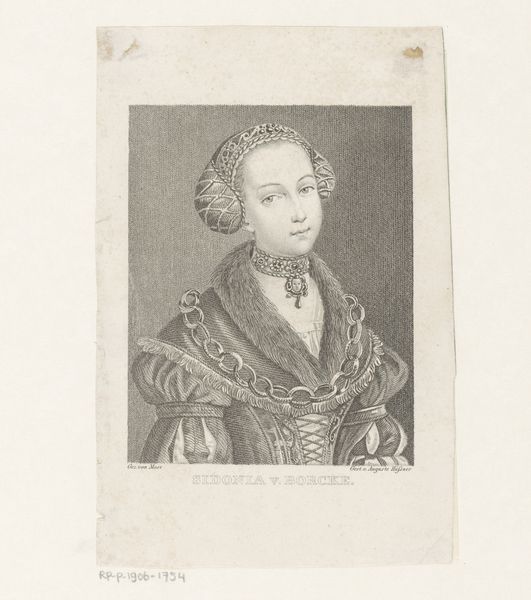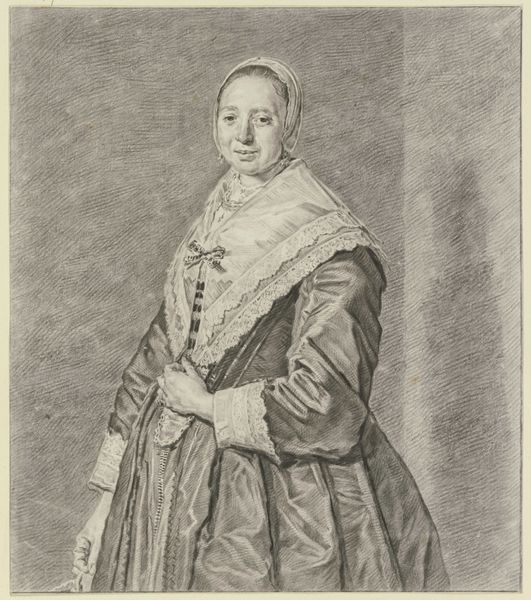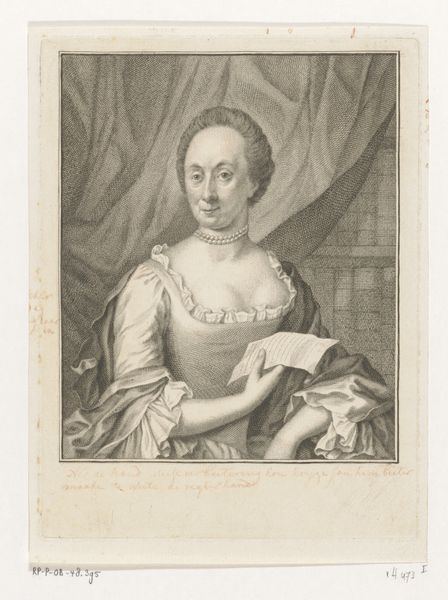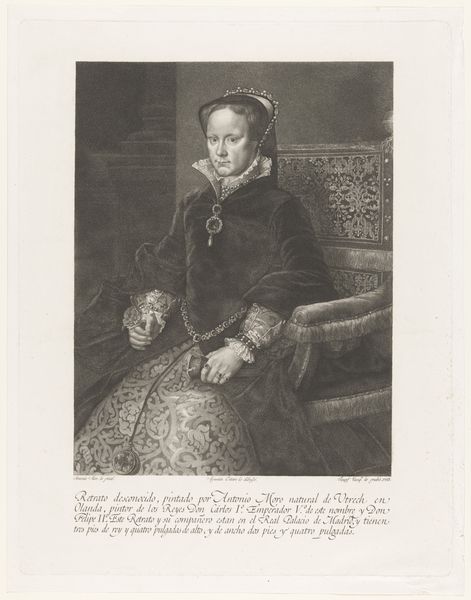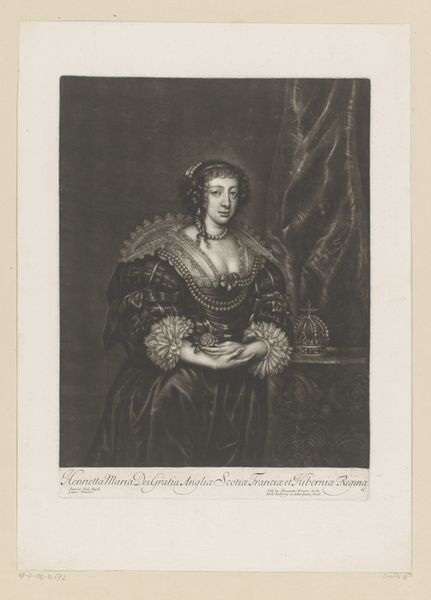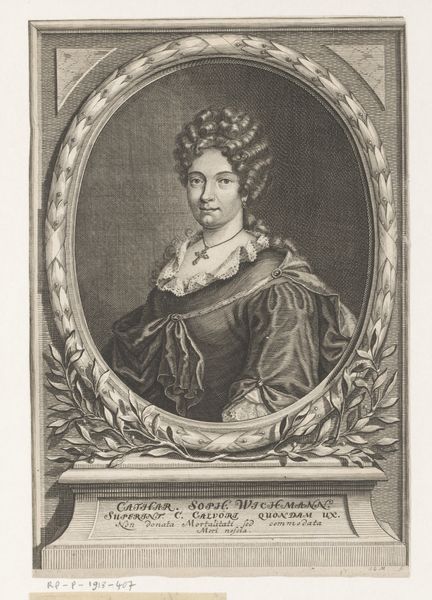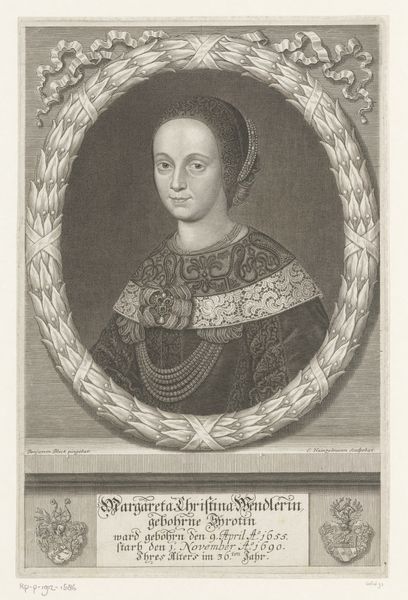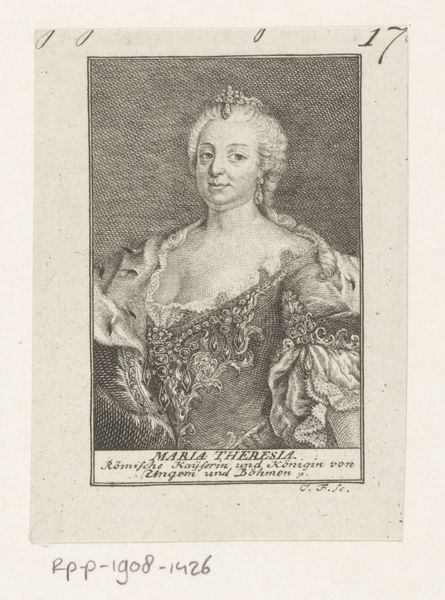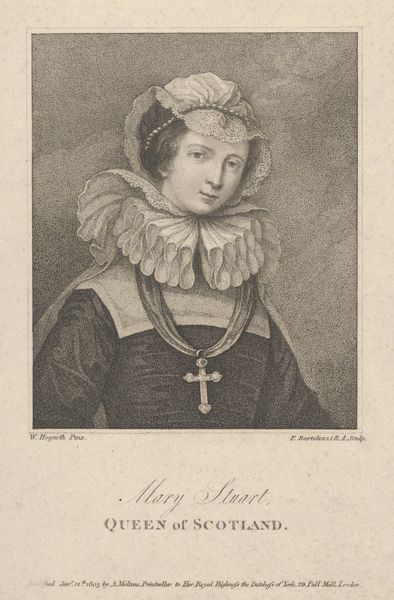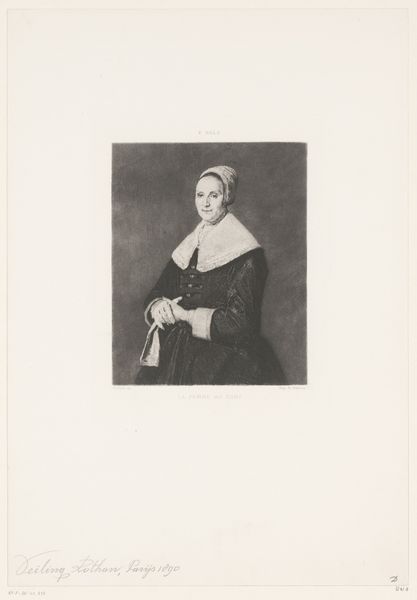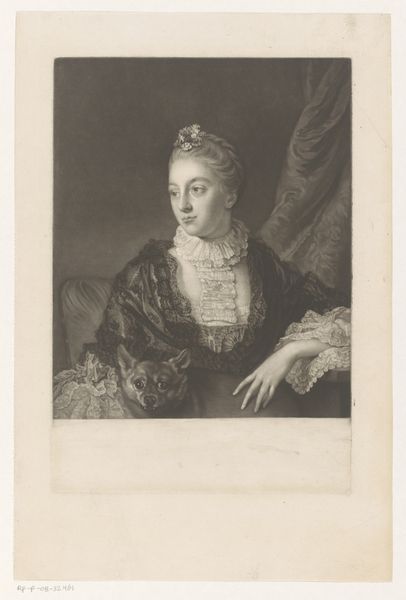
Helena Leonora de Sieveri (Helena Tromper Du Bois) c. 1649s
0:00
0:00
drawing, print, paper, engraving
#
portrait
#
drawing
#
baroque
#
dutch-golden-age
# print
#
old engraving style
#
paper
#
historical photography
#
engraving
Dimensions: 238 × 190 mm (plate); 350 × 267 mm (sheet)
Copyright: Public Domain
Curator: This print, residing here at the Art Institute of Chicago, is a portrait of Helena Leonora de Sieveri, or Helena Tromper Du Bois. Cornelis Visscher created it around the 1640s. Editor: The woman’s calm gaze really pulls you in. And look at those lace details! They almost feel like they are radiating a delicate, almost ephemeral, authority. Curator: Visscher was a master engraver, particularly skilled at capturing the textures and fabrics favored by the Dutch elite. Portraits like these solidified social standing. The burgeoning merchant class, with their new wealth, fueled the demand for such depictions. Editor: Right. That pristine white lace, set against the darker, heavier fabric of her gown creates this intense contrast between virtue and worldliness that was expected from the women of the time. It is all very deliberate. Curator: Absolutely. Dutch Golden Age portraiture often presented the sitters with a carefully constructed balance of piety and prosperity. What's interesting here is to think about the broader political context and rise of mercantile power. Women played an interesting role in shaping household economy and moral virtue during that time. Editor: Yes, that contrast speaks volumes, it seems almost symbolic of this tightrope they had to walk between luxury and piety. The gaze also is so central. This woman does not seem cowed, exactly. She understands how she's seen and participates in the production of her image, without fully giving herself over to it. Curator: Her somewhat reserved expression, along with the very conscious depiction of status through clothing and material details, shows the power dynamics at play and perhaps her active participation in managing them. This isn’t merely a representation; it is a constructed statement within specific social currents. Editor: Indeed. I leave this portrait now with a sense of wanting to understand the untold stories that radiate from this person depicted, of both resilience and societal pressure. Curator: And with an appreciation for the Dutch Golden Age artists’ keen understanding of how imagery can perpetuate social and political norms through a visual language.
Comments
No comments
Be the first to comment and join the conversation on the ultimate creative platform.
